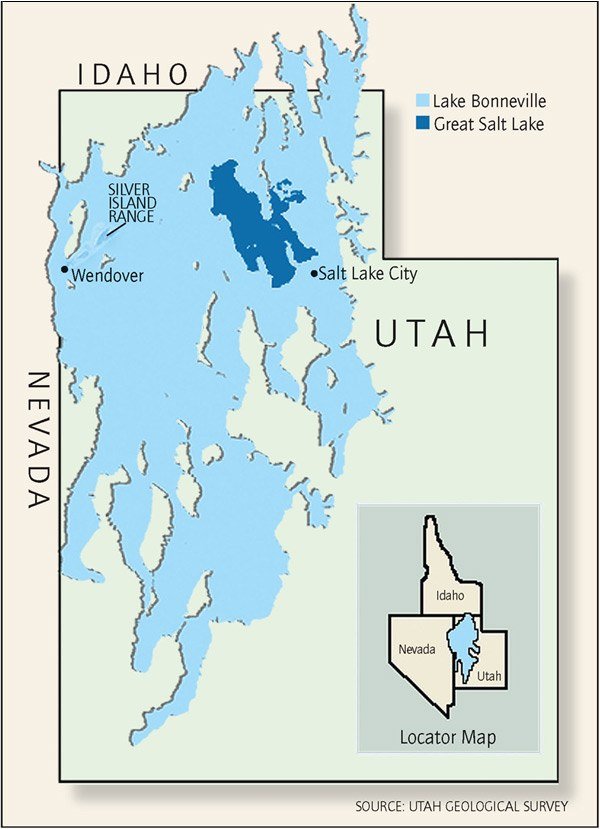Where is Lake Bonneville?
What are those Poles at Popperton Park?
Artist Day Christensen designed the sculpture High Line, to illustrate the level of Lake Bonneville. The poles range from 29 to 12 feet tall as they curve over the crest of the hill. They all terminate at the same height level creating an implied horizontal line reflecting the lake surface that once covered the entire valley. (Popperton Park is at the east end of Eleventh Avenue.)
Lake Bonneville was a prehistoric, fresh water lake that covered much of western Utah during the Late Pleistocene. Several paleo-shorelines are visible above Salt Lake City, and along the Wasatch front, where these shorelines have the appearance of a relatively flat shelf or “bench” that separates steep mountain slopes from the Salt Lake valley-floor. Popperton Park and 11th Avenue are located along one of these paleo-shorelines, as are the 18th Avenue meadows located above City Creek Canyon (pictured below) and the Natural History Museum of Utah.
Pluvial lakes, like the Great Basin today, do not have a natural outlet. During the Pleistocene or last Ice Age, the southwestern United States played host to several pluvial lakes. One of the largest was Lake Bonneville; the modern-day Great Salt Lake is a remnant of that much larger body of water.
State geologists say fish lived in Lake Bonneville in plentiful numbers. Mammoths would have roamed the shores alongside more familiar animals such as horses and bison, and the marshy shores would have played host to a number of amphibians and birds.
Salt Lake City-based Aero-Graphics commissioned POWER in 2018 to create a short video portraying what the ancient Lake Bonneville would have looked like 15,000 years ago.



